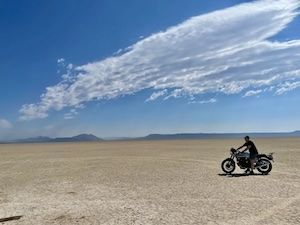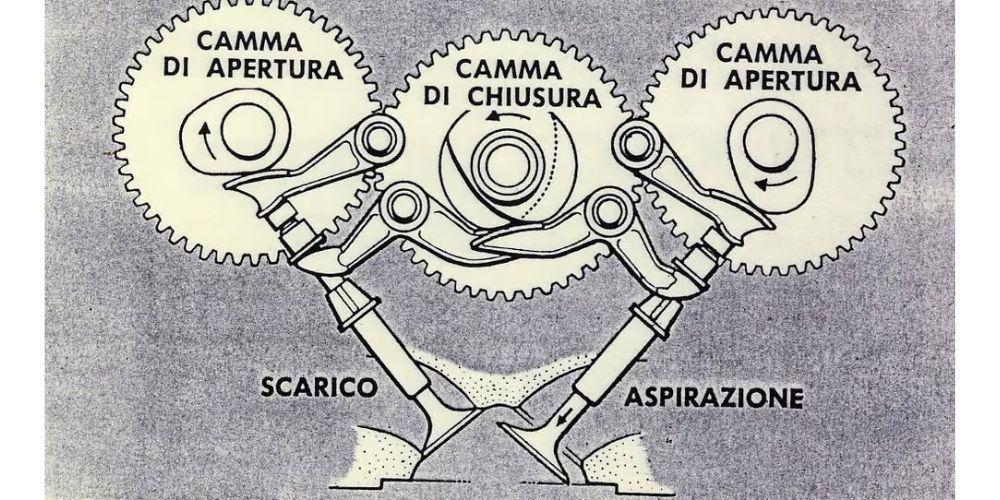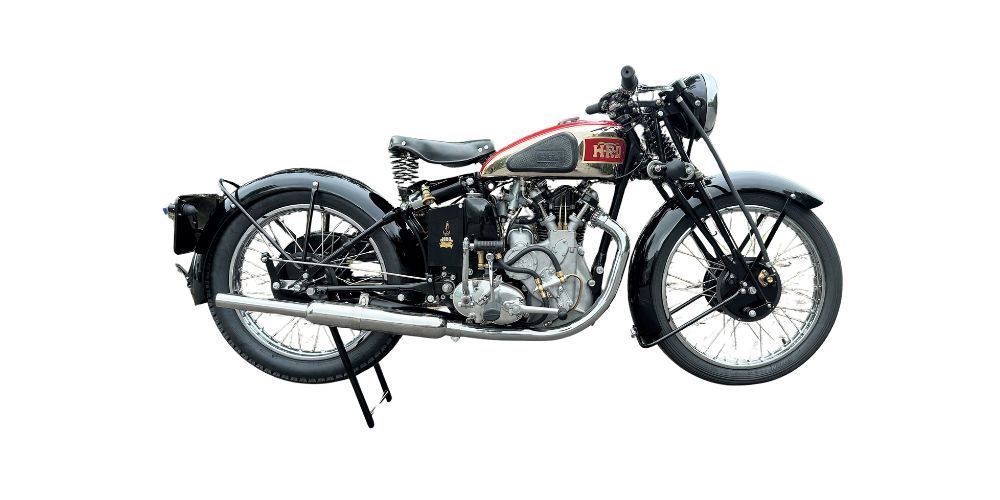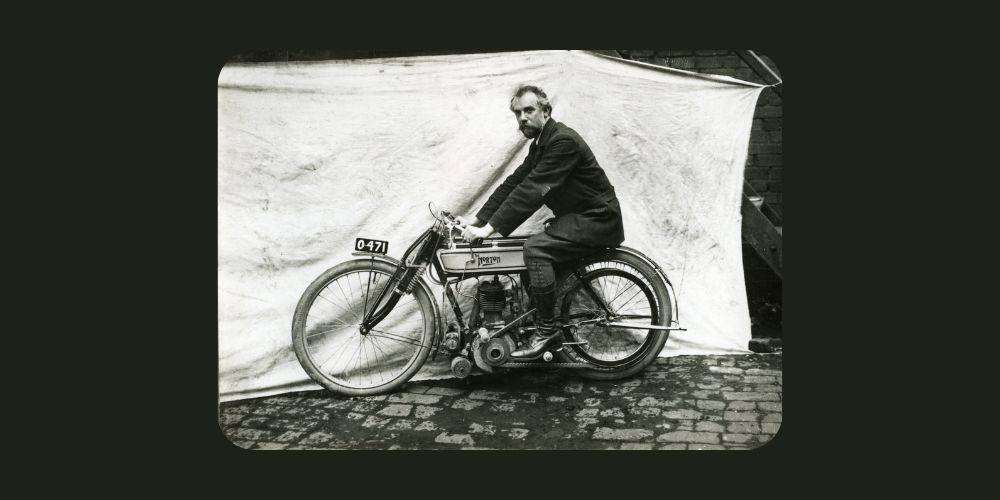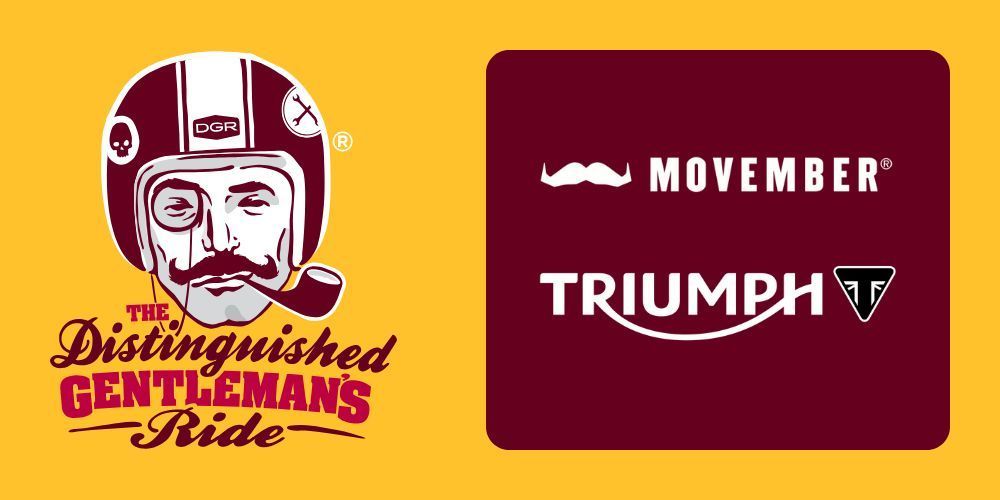The Origin of the Motorcycle
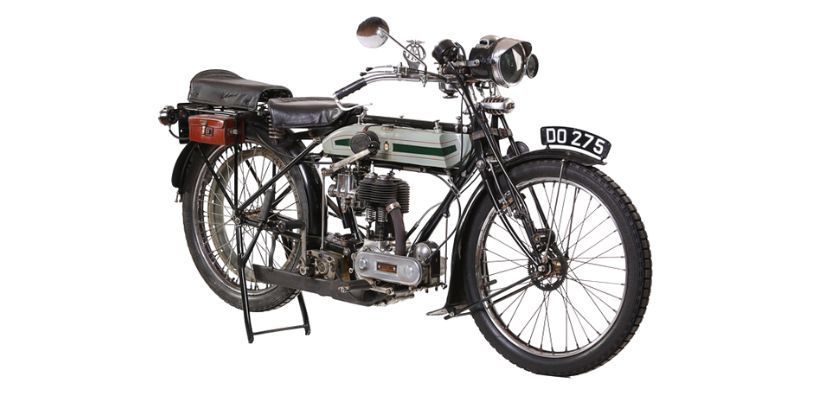
Origin of the Motorcycle
Motorcycles have been around for more than a century, and their history has long been intertwined with the evolution of transportation as a whole.
What started as an invention of necessity evolved into a sport and leisure activity that has gained immense popularity over the past few decades.
This article explores the origin of this iconic invention.
History of the Motorcycle
The history of the motorcycle is closely linked to that of its predecessor—the bicycle. It began in 1817 with Karl Drais' invention of the Laufmaschine (running machine/ balance bike, also called hobby horse).
However, it wasn't until the 1860s, when the pedal crank was invented and the steam engine addition incorporated, that any real progress toward motorcycle development was seen.
The Forerunner of the Motorcycle
The first non-commercially produced motorcycles were developed in the mid-Victorian era and used steam as their primary power source. This was shortly after Pierre Michaux—a blacksmith in Paris—invented his famous bicycle pedal bike (the velocipede).
In 1867, Ernest Pierre Michaux—Pierre's son—combined a small steam engine with one of their early "boneshaker" bicycle designs to create the Michaux-Perreaux steam velocipede. This is often considered the forerunner of the motorcycle.
Several other inventors were inspired by Ernest's model and performed similar feats of engineering using various types of steam engines. Sylvester H. Roper used a coal burn furnace in 1868, and Louis-Guillaume Perreaux used an alcohol burner chamber in 1871.
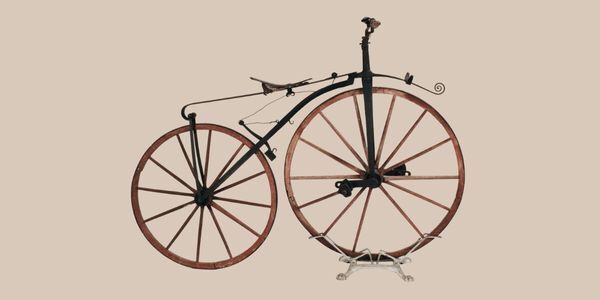
The First Motorcycle
In 1885, German engineers—Gottlieb Daimler and Wilhelm Maybach—beat American, British, and Indian manufacturers by introducing their petroleum-fueled internal combustion model—the Daimler Reitwagen (riding wagon).
The Reitwagen was the test bed for a high-speed petrol engine and was regarded as the first motorcycle. With internal combustion powering the bikes' engines, they had shed any resemblance to their early steam-powered ancestors.
The Term 'Motorcycle' Is First Used
In 1894, Hildebrand and Wolfmuller was the first motorcycle series to go into production, marking the first time they were available on a mass scale. This was also the first time the German word "Motorrad," meaning motorcycle, was used to refer to this new model.
However, their limited production capabilities prevented them from competing successfully with larger manufacturers, including
Triumph, English Royal Enfield, Harley-Davidson, and Indian Motorcycle Manufacturing Company.
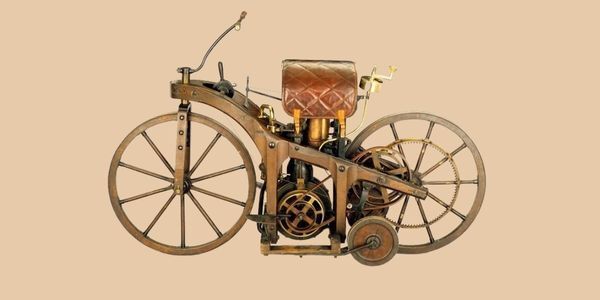
World War I and the First Modern Motorcycle
During the first World War, a heightened interest in motorcycles for war communications prompted American manufacturer Harley-Davidson to devote half its production to military use.
The Triumph Model H was also a significant milestone in the motorcycle industry. Referred to by motorcycle enthusiasts as the first 'modern motorcycle', it was known for its reliability, which made it an excellent choice for military use. The model was so well-loved by its users that they dubbed it the "Trusty Triumph".
Post-war Era
The motorbike underwent a cultural shift after World War II, becoming an object of recreation and a symbol of freedom and self-expression. Motorcycles were being designed not only to cater to their users' functional needs; they also strove to project an image of power & speed.
Although American and European manufacturers had a strong presence in the modern motorcycle market for nearly a century, Japanese companies became significant competitors in the post-war period thanks to their high-performance models and reasonable prices.
Despite the loyalty of many enthusiasts to traditional brands, Japanese motorcycle manufacturers such as Kawasaki, Yamaha, and Suzuki still dominate today's industry.
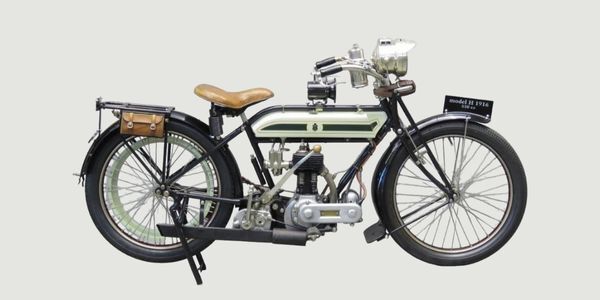
- Motorcycles were invented in the late 19th century.
- The first commercially successful motorcycle was built in 1885 by Gottlieb Daimler and Wilhelm Maybach.
- The term "motorcycle" was coined in the early 20th century to describe two-wheeled motorized vehicles.
- The earliest motorcycles were powered by internal combustion engines fueled by gasoline.
- Over the years, motorcycles have evolved with advancements in technology, design, and performance, becoming a popular mode of transportation and a recreational vehicle for many people worldwide.
The Evolution of Motorcycles: Popular Brands and Models
The history of motorcycles is a fascinating journey through technological innovation and cultural shifts. From the first rumblings of motorized two-wheelers in the late 19th century to the high-tech machines of the 21st century, motorcycles have captivated the hearts of enthusiasts around the world. Let’s explore the most popular motorcycle brands and models from each era, highlighting how they've shaped and been shaped by the times.
Late 1800s to Early 1900s - The Dawn of Motorcycling
In the pioneering years, the Hildebrand & Wolfmüller became known as one of the first production motorcycles. The United States saw the birth of the iconic Indian Motorcycle in 1901, with models like the Scout and Chief gaining popularity. The Excelsior Motor Company and Royal Enfield also began their long-standing legacies during this period.
1920s to 1930s - The Interwar Golden Age
This era saw the rise of Harley-Davidson with models like the Model J and the Knucklehead in the USA, while BMW made its mark in Germany with the R32. Other notable brands included BSA, known for the M20, and Moto Guzzi with its GT Norge.
1940s to 1950s - The Post-War Boom
Post-war prosperity brought a surge in motorcycle popularity. British brands Triumph and Norton introduced classics like the Speed Twin, Bonneville, Dominator, and Commando. Vincent Motorcycles' Black Shadow became a legend, and AJS continued to be a significant player.
1960s to 1970s - The Rise of Japanese Brands
The Japanese motorcycle industry boomed, led by Honda's revolutionary CB750. Yamaha, Kawasaki, and Suzuki also made their marks with models like the Yamaha XS-1, Kawasaki Z1, and Suzuki GT750. Yamaha's DT-1 created a new off-road biking trend.
1980s to 1990s - Global Expansion and Technological Advancements
This era was marked by the technological prowess of brands like Ducati with the 916, and the continued popularity of Harley-Davidson's Softail and Fat Boy. The Suzuki GSX-R series set new standards for sport motorcycles, and the Harley-Davidson Sportster became a cult favorite.
2000s to Present - Diversification and Innovation
The 21st century saw a diverse range of motorcycles. BMW's GS series catered to adventure seekers, Ducati's Monster and Panigale appealed to performance enthusiasts, and KTM made a name in off-road biking. Triumph revisited its roots with modern classics like the Bonneville. The Yamaha YZF-R1 continued to impress in the sports category. Notably, the rise of electric motorcycles with brands like Zero, Energica, and Harley-Davidson's LiveWire indicated a shift towards sustainable technology.
The evolution of motorcycles reflects more than just advancements in engineering and design; it mirrors the changing tastes, lifestyles, and cultures of riders across generations. From the rugged simplicity of early models to the sophisticated, high-performance bikes of today, each era's motorcycles tell a story of innovation, passion, and the relentless pursuit of freedom on two wheels. As we look towards the future, it's clear that motorcycles will continue to evolve, capturing the imagination of riders for generations to come.
Types of Motorcycles
List of Services
-
StandardList Item 1
Standard motorcycles are the most common type and are also known as naked bikes. The engine is located in front of the rider, and the rear wheel is driven directly by the engine. This layout provides good balance and maneuverability compared to other configurations. They're typically used for commuting or other short trips around town.
-
CruiserList Item 2
A cruiser is similar to a standard motorcycle but differs in size, appearance, and purpose. Cruisers tend to have higher handlebars and forward-mounted foot pegs. They also offer a low riding position letting their riders lean back a little while sitting.
-
TouringList Item 3
A touring motorcycle is designed for long-distance travel. It has a comfortable riding position, luggage racks, storage compartments, and large tires for softening bumps on unpaved roads. They also have large engines and fuel tanks that make them ideal for long trips.
-
SportList Item 4
Sport motorcycles are built for speed and agility. They have low handlebars, a crouched riding position, and a fairing to shield the rider from the wind. Sport bikes also feature quick acceleration, high-performance suspension systems, powerful brakes, lightweight frames, and powerful engines—making them extremely fast machines compared to other types of motorcycles.
-
Off Road
Off road bikes also referred to as dirt bikes or scramblers, are designed for dirt trails and off-road use only. They are often designed with a large fuel tank, softer suspension, and an 18-inch rear wheel to provide better traction in rough terrain such as sand, mud, or snow.
-
Dual Purpose
Dual-purpose motorcycles are used for both on-road commuting and off-road riding—they're great for getting around town but also offer comfort when you head out into nature.
They have high seats and a slightly elevated center of gravity to better handle rough terrain. In many ways, they are similar to dirt bikes—but they also come equipped with mirrors and lights so riders can legally use them on public streets.
- The first motorcycle was invented in 1885 by Gottlieb Daimler and Wilhelm Maybach.
- Over 100,000 motorcycles were sold worldwide in the first decade after their invention.
- By 1900, the production of motorcycles had reached approximately 20,000 units annually.
- In the United States, motorcycle registrations surpassed 50,000 in 1910.
- The number of motorcycles on the roads worldwide exceeded 150 million by the year 2020.
Motorcycle Racing and its Influence on Innovation
Motorcycle racing has been a significant catalyst for innovation in motorcycle technology and design. The intense demands of the racetrack have driven manufacturers to develop new technologies, materials, and design philosophies, many of which have eventually trickled down to consumer motorcycles. Here’s how motorcycle racing has influenced motorcycle innovation.
Engine Development
Racing has always pushed the boundaries of what’s possible in terms of power and efficiency. High-revving engines, advanced fuel injection systems, and turbocharging techniques developed for racing have found their way into production bikes.
Aerodynamics
The quest for speed on the racetrack has led to extensive research in aerodynamics. This has resulted in more streamlined motorcycles with improved wind resistance, benefiting both racing and road bikes.
Materials Technology
The use of lightweight, high-strength materials like carbon fiber, titanium, and advanced alloys first emerged in racing. These materials reduce weight and increase strength, enhancing the performance of both racing and street motorcycles.
Suspension and Handling
Racing has driven advancements in suspension technology and chassis design. Features like adjustable suspension systems, which allow riders to fine-tune their bike’s handling, were first developed in racing.
Braking Systems
The need for powerful, reliable braking in racing has led to the development of superior braking systems, such as anti-lock braking systems (ABS) and carbon-ceramic brakes, which are now common in many high-performance street bikes.
Electronic Aids
Technologies such as traction control, launch control, electronic throttle control (ride-by-wire), and electronic stability programs were all honed on the racetrack before making their way to consumer models.
Safety Innovations
Racing has also been a testing ground for safety innovations. Developments in protective gear, crash dynamics, and even ergonomic design have been influenced by the needs and experiences of racers.
Tire Technology
The extreme conditions of motorcycle racing have led to significant advancements in tire technology. This includes improvements in tire compounds, tread patterns, and construction, enhancing grip, stability, and longevity.
Fuel Efficiency and Emissions
While traditionally not the primary focus of racing, increasing environmental concerns have led to innovations in fuel efficiency and reduced emissions in racing motorcycles, influencing street-legal bikes.
Hybrid and Electric Technologies
In recent years, the emergence of electric motorcycle racing (like the Isle of Man TT Zero race) has spurred development in electric propulsion, battery technology, and energy recovery systems.
The world of motorcycle racing serves as a high-stakes, real-world laboratory where manufacturers can develop and test advanced technologies under extreme conditions. Many of the features and technologies that are now standard on production motorcycles were originally developed to give racers an edge on the track. This symbiotic relationship between racing and production motorcycles continues to drive the evolution of motorcycle technology.
The Future of Motorcycle Design & Innovation
The future of motorcycle innovation is poised to be as exciting and dynamic as its past, with advancements focusing on technology, environmental sustainability, safety, and user experience. Here are some key areas where we can expect significant developments.
Electric Motorcycles
The shift towards electric vehicles is a major trend, and motorcycles are no exception. Future innovations in electric motorcycles will likely focus on extending battery life, reducing charging time, and increasing power and range. Electric motorcycles offer the benefits of being more environmentally friendly, having fewer moving parts (which reduces maintenance), and providing instant torque.
Advanced Rider Assistance Systems (ARAS)
Similar to the advanced driver-assistance systems in cars, ARAS in motorcycles may include features like adaptive cruise control, blind-spot detection, and collision avoidance systems. These technologies will enhance rider safety by using sensors and AI to monitor and respond to road conditions.
Connectivity and IoT Integration
Motorcycles are expected to become more connected, with integrated systems that can communicate with other vehicles and infrastructure (V2V and V2I communication) to enhance safety and traffic management. This could include real-time traffic updates, weather alerts, and route optimization.
Autonomous and Semi-Autonomous Features
While fully autonomous motorcycles might seem far-fetched, semi-autonomous features such as self-balancing technology, automated emergency braking, and lane-keeping assistance are likely to become more prevalent.
Lightweight Materials and Design
The use of advanced materials like carbon fiber and new alloys will continue to reduce weight and increase the strength and efficiency of motorcycles. Aerodynamic design will also evolve to improve fuel efficiency and performance.
Customization and Personalization
Advances in manufacturing technologies like 3D printing will allow for greater customization of motorcycle parts, enabling riders to tailor their bikes to their specific preferences in terms of aesthetics, ergonomics, and performance.
Sustainable Practices
Beyond electric powertrains, the motorcycle industry will continue to innovate in sustainable practices, including the use of eco-friendly materials, manufacturing processes, and recyclable components.
Hybrid Technologies
Combining the benefits of internal combustion engines with electric motors, hybrid motorcycles may offer an interim solution, providing better range than fully electric bikes while reducing emissions compared to traditional engines.
Enhanced User Experience
Innovations in dashboard displays, augmented reality (AR) helmets, and wearable technology will provide riders with more information and an enhanced riding experience. This could include navigation, ride data, and even augmented views for safety.
New Business Models and Services
The rise of motorcycle sharing, subscription models, and on-demand services will likely influence motorcycle design and technology, with bikes being built for durability, longevity, and adaptability to different riders.
The future of motorcycle innovation is likely to be shaped by a combination of technological advancements, environmental considerations, and changing consumer preferences. The emphasis will be on creating smarter, safer, and more sustainable motorcycles that enhance the riding experience while minimizing environmental impact.
About the Author
William Flaiz, passionate about European motorcycle brands, shares his expertise and stories on RunMotorun.com. He offers detailed insights and reviews, aiming to educate both seasoned enthusiasts and newcomers. Flaiz combines personal experience with thorough research, welcoming visitors to explore the rich world of European motorcycles alongside him.

